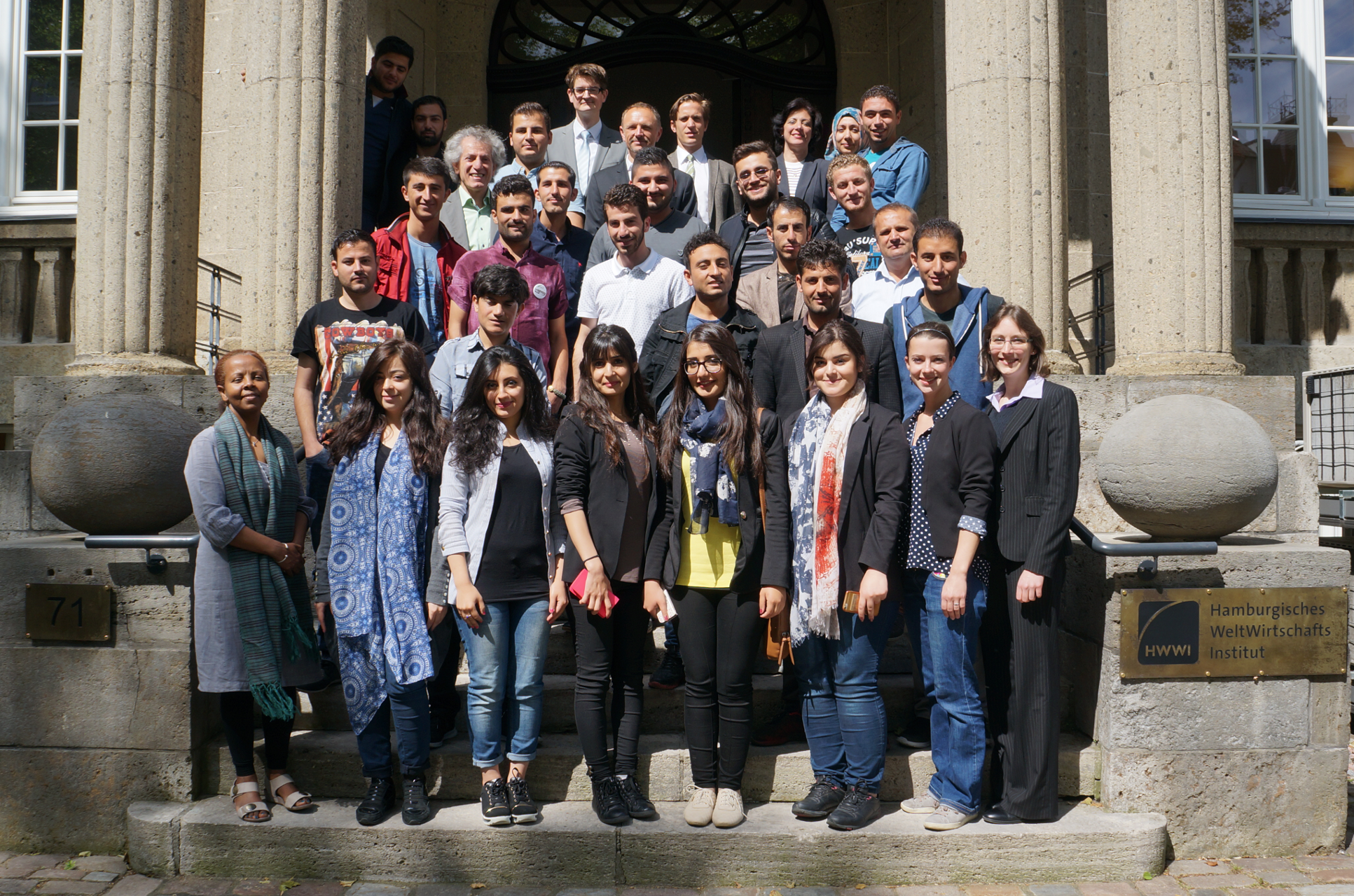It is always a good thing when students don’t only study from books, but also get the opportunity to see and experience what they study. Dr. Maha Maleika, Head of the Engineering Planning Department at Duhok University in Northern Iraq, had the vision to develop a study programme that would allow her students to see and learn from foreign experiences. Today, Duhok University offers a Bachelor of Science degree in Spatial Planning in cooperation with the Faculty of Spatial Planning at the TU Dortmund that makes exactly that possible: a four-week study tour including study stays in Dortmund, Berlin and Hamburg.
Last week, the first group of students accompanied by lecturers from Duhok University and the TU Dortmund came to Hamburg for a four-day programme of lectures and excursions on sustainable transport which I had co-developed for the hosting organisation, the European Institute for Sustainable Transport.
With sustainable transport being such a vast topic, what do you cover in four days? Different scales of transport planning, different modes of transport, financial aspects, demand and supply management, public engagement, people or freight? This week was supposed to open the students’ eyes to the interconnectedness of transport planning, the relationships between urban development and traffic, between the provision of transport infrastructure and people’s behaviour and between research, planning practice and live traffic management.
My special thanks go to the Hamburg Institute of International Economics (HWWI), who hosted us for two days and provided lectures on infrastructure development, transport planning at the city-region scale and financial aspects of transport planning, thereby giving the students a sense of current research topics in sustainable transport.

Group photo in front of HWWI
Hamburg, 09/06/2015
Our first excursion was to take us to IKEA in Altona. ‘Really?’ you might ask. In order to limit the impact of new traffic on the neighbourhood, the development of this first inner-city IKEA required an innovative transport and logistics concept, which was explained to us by one of the developers from ARGUS Stadt- und Verkehrsplanung. The small distance to the public transport hub Altona as well as a whole range of possibilities to transport purchases home, including cargo bicycles for hire, has successfully desincentivised the use of the private car for a trip to this IKEA. Infrastructure that was cleverly adapted to people’s needs was able to reduce traffic impact and allow the development of such a huge operation in the inner city.
New city developments always impact on traffic and, therefore, transport demand and supply need careful consideration from the start. This lesson was further demonstrated to the students through guided tours in the newly developed Hafencity area and the International Building Exhibition (IBA). Additionally, a visit to the local citizen initiative ‘Die Motte’ in Ottensen demonstrated that urban interventions are not just an engineering challenge, but ultimately affect people who might want to have a say in the development of their neighbourhood. Finally, with a tour of the Hamburger Hochbahn company, which runs the public underground trains (U-Bahn) as well as the entire public bus system in Hamburg, the students could witness live traffic management and could grasp the challenge of managing a flow of 438 million people per year across the city.
Sustainable transport and traffic planning is more than an engineering challenge. It is integrally linked to urban development, access and social mobility, life quality and wellbeing. People are right at the centre of transport and traffic planning. The students left with impressions of a city, with its administration, its private companies and voluntary sector, with its city-region transport modelling as well as its local citizen initiatives, where a lot works well and a lot still needs to be improved. Hamburg is work in progress – like any real city – and this you can’t study only from books.
